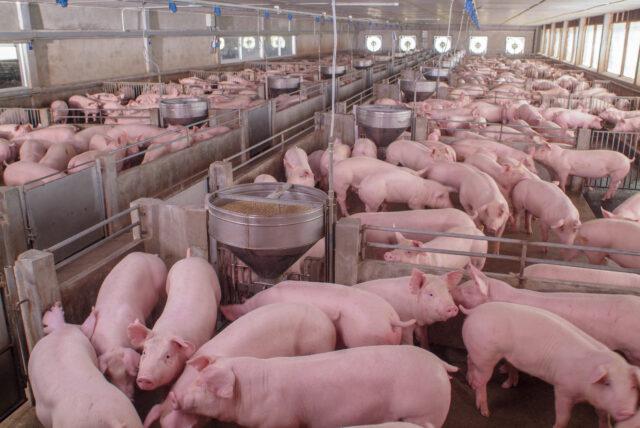Porto Alegre, November 30, 2023 – Chinese pig farming has been experiencing a difficult scenario. There are no clear signs of a way out of the situation in the short term, at least not before the first half of 2024. Among the variables that impact China now are large pork supplies,a slowdown in the country’s economic activity, lack of consumer confidence, exchange rate, high cost of production, and rumors surrounding animal health issues. It is worth noting that China continues to be very important for the Brazilian pork market, becoming the main export destination, even with the slowdown that occurred over the last few months. Besides lower import volumes, China is paying less, which is natural, considering that prices in the interior of the country are depressed. Many market participants, such as less structured pig farmers, have coped with significant losses.
Brazilian industries have been suffering from the flattening of margins due to the decline in the price per ton and the appreciation of the real against the dollar. Given this situation, live animal business tends to keep facing difficulties in the interior of the country and prevent more consistent price highs. The first four months must be the most difficult for Brazilian pig farming in 2024 due to the international scenario and pork seasonality in the domestic market. The first months of the year are historically the period with the lowest consumption due to high temperatures and the highest level of household expenses. In any case, even with weak prices, it is essential for Brazil to export as much as possible, considering that domestic availability is high, otherwise Brazil could once again face a severe crisis.
Returning to China, it was recently reported by international agencies, citing the local government, that the country’s matrix herd closed September with 42.1 mln head, above the 41 mln considered ideal. It was also reported that the government will seek to stabilize land, environmental, financial, and other support policies so that the level of production finds a balance point.
Over the year, China purchased frozen pork for state reserves, a measure welcomed by the market, but which has had little effect on generating a favorable environment for prices so far. China’s pig slaughter is advancing this year, generating a greater volume of meat in a weak consumption environment. According to an estimate released by the US Department of Agriculture (USDA) in October, China’s pig slaughter is expected to close 2023 at 713.61 mln head, surpassing the number of 2017, the year before the emergence of African swine fever in the country. Households are indebted, and no matter how many economic stimulus packages occur, the practical effects on the real economy are not immediate. Last week, there were new rumors regarding the crisis in the real estate sector and possible government aid, which brought uncertainty to the local population.
China has been cutting the basic interest rate. As a result, the country has become less attractive to foreign capital, which has fueled the devaluation of the yuan. A weaker yuan favors exports but makes imports more expensive. In short, it benefits the country’s trade balance. High pork supply and weak currency led the Asian country to bargain prices on the international market, and this ended up weighing on Brazilian export figures.
The next Lunar New Year, the main Chinese holiday and where consumption peaks, will take place in mid-February. The expectation is for consumption to increase, but not enough to reduce domestic supply and change the price scenario. The lack of profitability among pig farmers could lead them to accelerate sales in the first months of 2024, so much so that live pig futures contracts listed in Dalian show a pessimistic perception among agents. On November 24, the Jan/24 contract closed the session at ¥ 15,430 per ton (yuan as the contract currency), practically at the bottom of the graph. The March/24 contract closed at an even worse level, at ¥ 14,545 per ton. The market expects some price reaction from the second half of 2024 onward, with a possible favorable economic environment helping consumption. However, uncertainties are expected to remain great in China practically all over 2024.
Brazil must pay attention to the scenario described and seek to further diversify the destinations of exported pork, promote production adjustment measures, so that availability adapts to the reality of domestic demand, and advance policies to stimulate consumption, since pork is not the everyday protein used by Brazilian households.
Follow the Safras Agency on our website. Also follow us on our Instagram and Twitter and stay on top of the main agribusiness news!
Copyright 2023 – Grupo CMA

